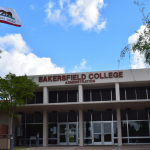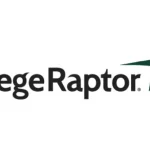College administrators are quite familiar with the phrase “do more with less.” It has been a continual refrain for the past two decades within higher education. And, amid the havoc caused by the pandemic, schools and students need to interact more seamlessly than ever in an increasingly “resource-constrained” world.
For institutions, the reason is simple: in today’s enrollment environment – every student counts. Funding, institutional success, and fiscal stability all depend on it.
Whether the institution is a two-year college seeking to serve the community and meet its enrollment targets or a four-year private institution that needs a competitive advantage in admissions, engagement is critical. And it is engagement with existing students that helps keep students on the path to success.
Department-Level Engagement Challenges
College and university departments – think Admissions Office, Advising Office, Registrar, Financial Aid, IT Help Desk, and so on – are on the front-lines interfacing with students. If resources are truly “constrained”, how can administration staff successfully grow their institution’s enrollment and strengthen their level of engagement with students?
The answer can be found by first understanding the four key issues that often prevent administrators from providing students with the level of support and engagement they ideally desire.
Service Capacity is Limited
Broadly, at most institutions, funding for higher education is stagnant and shrinking. This means schools are limited in how much staff they can hire. If the “demands” are greater than the “capacity” of the team to respond to them, there is a problem. The problem leads to frustrated students, and ultimately, fewer enrolled and retained students.
Often Hard to Triage
Think of the classic “line ” of students out the door” waiting for help. With limited staff and technology support, there is often no systematic process to triage the students who need a higher level of assistance, or more urgent help than others. This leads to an inefficient use of staff time and resources.
The “Paying for College” Piece is Always an Issue
It’s important to remember that the financial aspect of higher education is often the biggest source of stress, angst, and questions for students. It colors so much of what a college student is thinking, including decisions about classes, full-time vs part-time status, balancing and existing job, etc. It may seem easy to simply direct a student with financial issues to the financial aid office, but that will miss the opportunity to engage with the student on the broader, underlying root financial cause that may be impacting the student’s decision-making.
Silos Can Be Inefficient
Admissions, Financial Aid, Bursar, Registrar, and other departments all have their own goals, policies, and procedures. When there is alignment among the key departments, the student experience can be wonderful. When things break down, there is a cost: students get frustrated, staff gets frustrated, and enrollment can be negatively impacted.
AI As a Tool for Departments to Overcome Engagement Challenges
How can Departments respond to these challenges? Often the simplest way is to try something in a limited test environment, see if it works, and then over time, once proven effective, expand the use of it. This is particularly true with the newer, affordable, AI-powered technologies such as chatbots, live chat, and text campaigns, which require a far lighter “lift” for ongoing maintenance and support than other technologies.
Some practical best practices we see that are making an impact include:
Be Accessible 24/7 on Any Device
Almost all students have a mobile device. Make reaching them on that device with AI tools a key part of your communication strategy and plan.
Blend AI Technology with Human Support
Leverage AI technology alongside – not in competition with – staff. Use it to triage. Use it to handle responses when a large number of students are texted at once as part of a single text campaign. Use AI-powered live chat to assist staff with suggested answers from the AI that are consistent and up to date.
Make the Affordability Case Easy-to-Understand
Make the affordability case. Not just for students, but fellow administrators as well. Everyone should be aware of the resources (programs and education) that are available to help students financially and know where to direct them for personalized help. Encourage staff to use the same tools that students are encouraged to use, such as an AI chatbot, in order to find answers quickly.
Go Enterprise-Wide and Integrate Data to Provide Students a Personalized Experience
Breakdown silos by providing students with personalized tools that bring in data from various technologies and multiple departments, especially within enrollment management. Ensure that if students are using a school-supported AI chatbot, that they can ask it for help on a variety of topics, not just the original topic they first intended to ask about.
The Wrap
Ocelot has worked with colleges and universities for over two decades, through various iterations and advances in technology. Today’s affordable AI technologies are by far the most scalable, and most user friendly for departments and staff. Administrators know that technology can be a great way to engage students. The most successful technologies are those that are affordable, those that are easy for the staff to maintain, those that extend the reach of the human staff and those that make a positive impact on the students who use them. AI technologies check all of the key boxes.















